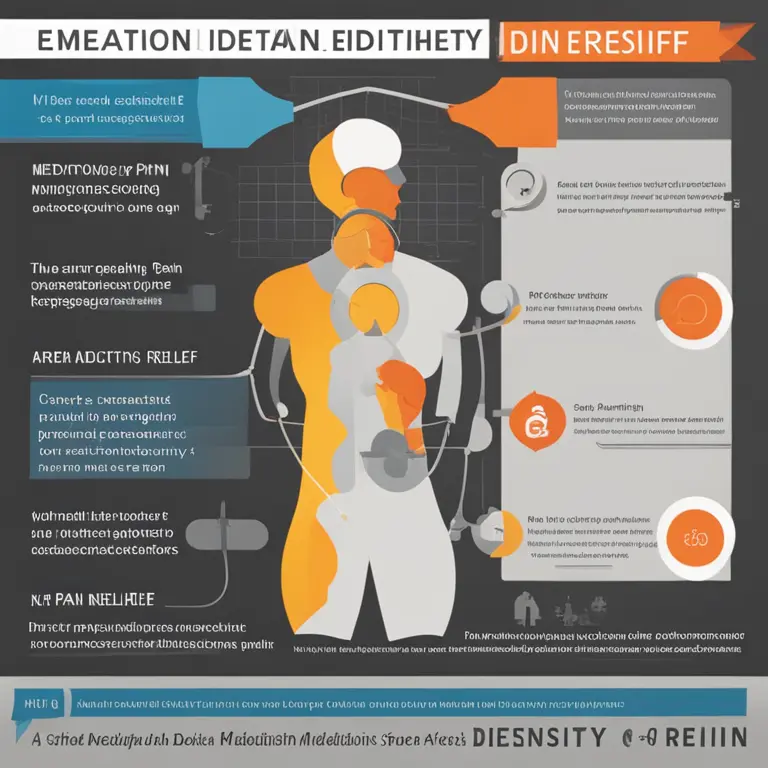
Effective Meditation Techniques for Easing Pain
Explore effective meditation practices to manage and relieve pain, enhancing overall well-being and harnessing the power of the mind.
article by Hina Kurosawa
The Intersection of Mind and Pain Relief
Meditation, an age-old practice rooted in various traditions, has gained modern acclaim for its role in pain management. Recent advances in neuroimaging and neuroscience have shown that meditation can alter the perception of pain. By training the mind to focus and redirect thoughts, practitioners can develop greater control over their response to painful stimuli. This phenomenon is often referred to as "mind over matter," where consistent meditation practice can potentially lead to long-term changes in the brain associated with pain processing.

Understanding Meditation and Its Types
Meditation is not a one-size-fits-all remedy. Various forms such as mindfulness meditation, guided imagery, and body scan meditation offer different approaches to confronting pain. Mindfulness meditation encourages an aware yet non-judgmental observation of the present moment, which can include acknowledging pain without emotional reactivity. Guided imagery prompts individuals to envision a peaceful scene, distracting from discomfort, while body scan techniques involve a gradual progression of attention through different parts of the body, often leading to a state of deep relaxation and diminished pain perception.

Getting Started with Pain-Relief Meditation
For those new to meditation, starting with short, daily sessions can help ease into the practice. Beginners might benefit from guided sessions, available through various apps or online resources, which provide verbal instructions to lead the practitioner through the process. The key is consistency; even 10 minutes a day can make a discernible difference in one's pain experience and overall well-being. As proficiency grows, so can the length and complexity of the meditation sessions.

Scientific Evidence Supporting Meditation for Pain
A growing body of research endorses meditation as a tool for pain relief. Studies have demonstrated that regular meditators exhibit altered brain responses to pain, with decreased activity in areas associated with pain processing. Moreover, meditation has been linked to increased gray matter density in regions tied to pain regulation, indicating not only short-term benefits but also potential long-term neural alterations that can mitigate the pain experience.

Meditation, Emotions, and Pain
Pain is not purely a physical experience; emotional states can influence its intensity. Meditation helps in managing the emotional aspects of pain by fostering a sense of calm and acceptance. Techniques such as loving-kindness meditation have been shown to promote positive emotions and empathy, potentially reducing the emotional burden of chronic pain and enhancing an individual's pain threshold.
Incorporating Meditation into Daily Life
Meditation for pain relief can be integrated into daily routines with ease. It can be done upon waking, during a lunch break, or before sleep. The flexibility of meditation allows for practice in various settings, whether at home, in a park, or even in a quiet office space. For those with mobility issues or severe pain, tailored practices like chair meditation can provide comfort without undue strain.
Combining Meditation with Other Pain Management Strategies
While meditation can be a powerful tool for pain relief, it is most effective when part of a holistic approach to pain management. This might include traditional medical treatments, physical therapy, exercise, and nutrition. Combining these elements with meditation creates a comprehensive strategy that addresses both the mind and body aspects of pain.
Published: 1/14/2024
Modified: 1/15/2024
More predictions
Come back here soon to learn more about yourself and your future


Mindfulness & Meditation: A Guide for High Schoolers
Discover the benefits of mindfulness meditation tailored for the hectic life of high school students, and learn simple strategies to incorporate it into the daily routine.


Mindfulness Meditation: A Handbook for High Schoolers
Discover how mindfulness meditation can benefit high school students, enhancing focus, reducing stress, and promoting overall well-being.


Easing Loneliness with Meditation
Discover how mindfulness meditation can provide solace and connection to mitigate feelings of loneliness, enhancing emotional and mental well-being.